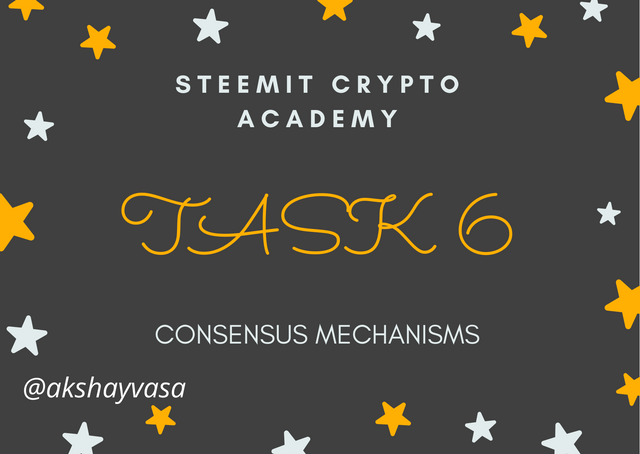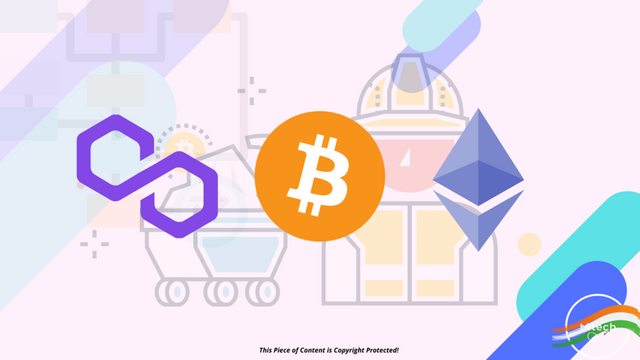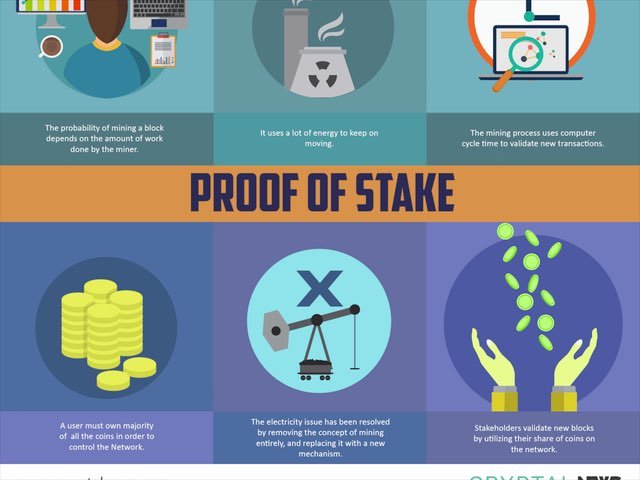[Different Types of Consensus Mechanisms ] - Steemit Crypto Academy Season 5 - Homework Post for Task 6
What is the difference between PoW & PoS? Advantages & Disadvantages? Which one is better in scaling Capacity? Examples?
Blockchain is a decentralized system, which means that there is no center or authorities. A strong and secure decentralized system must have some way of testing the data. And instead of holding a central authority accountable for it, blockchain creates an agreement between all of its users. This agreement can be achieved with consensus mechanisms.
Proof of Work and Proof of Stake are examples of consensus mechanisms that operate on different principles.
Both mechanisms are a necessary requirement to confirm transactions within a blockchain, thus avoiding intermediaries.
Proof of Work and Proof of Stake are general categories within the consensus algorithms. A consensus algorithm is formed by a series of rules that determine which copy of the blockchain is valid and which is not.
PROOF OF WORK (PoW)
PoW was the first consensus algorithm that emerged with the arrival of Bitcoin (BTC) in 2008. This algorithm consists of confirming the blocks produced by the network, those in charge of this are the miners, who, competing with each other, are dedicated to Solve complex mathematical operations to confirm the blocks and thus achieve a reward, since the first to confirm a block receives a reward. This process is also done to add cryptocurrencies to the network.
The Proof of Work is based on advanced mathematical formulas called “cryptography”. Cryptography uses mathematical equations so difficult that only the most powerful computers can solve them. By solving these complex mathematical equations, the network knows that the transaction is authentic.
The Proof of Work or Proof of Work is used to eliminate intermediaries, replacing them with the community itself, which must approve each transaction through its consensus. This eliminates the possibility of malicious transactions by requiring the approval of the total set of miners to form the new block within the blockchain.
PROOF OF STAKE (PoS)
Proof of Stake, this consensus algorithm instead of using the power of mining machines, uses the coins of users in frozen wallets to verify transactions, it is a distributed consensus protocol within a distributed cryptocurrency network. This protocol seeks to give greater scalability to the transactions carried out in a cryptocurrency network.
Its operation is based on the number of cryptocurrency units that the participating nodes have in the network. This protocol works thanks to the validator nodes, these nodes are chosen randomly according to who has the most probabilities. Odds are decided based on who best meets a set of criteria. Among them are the amount of reserved coins or the time of participation in the network. That is, the nodes that perform the mining work in PoS are the richest nodes. To maintain overall participation in the network, those nodes that have less money can also be selected, but with a lower probability in the selection process. .
POS
| Advantages | Disadvantages |
|---|---|
| Provides a robust mechanism to achieve consensus and prevent abuse and misuse | Mining requires highly specialized computer hardware to run the complicated algorithms. |
| It certifies the validity of the transactions in a public way, through a consensus among the users themselves. Which means that the work they do from this algorithm is completely honest. | Power consumption is a big disadvantage in proof of work since they need more and more power to win the competition against other computers and get to get a reward.This excessive power consumption to solve calculations cannot be used in other businesses, sciences or any other field. |
| It is a way to add cryptocurrencies to the network. The operation of this algorithm is mainly based on the work of miners to find a randomly generated cryptographic variation, at a difficulty that varies according to the amount of work applied in order to maintain the regulated coin issuance rate. | In the PoW algorithm, miners with greater capital and investment time are favored, that is, in the long term the mining power will be centralized. |
| It protects the cryptocurrency from fraud and data manipulation, since it shields the network against all kinds of computer attacks. It also serves to avoid double spending. | The high cost of mining cryptocurrencies means that more powerful computers and machines are required for their exploitation, which means that the networks tend to belong to large investors. |
| Hashes are the method used in the Proof of Work to detect the possible manipulations that occur in the blockchain. | Finding a hash number is difficult and highly expensive so the PoW algorithm requires a miner to use great computing power to encode the block data and find the solution. |
POW
| Advantages | Disadvantages |
|---|---|
| The main advantage is related to the environment, since large amounts of electrical energy will not be necessary as in PoW to ensure the operation of the Blockchain. | In PoS the only thing that is needed to access the network are cryptocurrencies, therefore any government or entity could take control, especially in cryptocurrencies that do not have many users. |
| Very advanced computer equipment is not required to obtain it, since by having the cryptocurrencies demanded by the network frozen, you could be rewarded by the network. | You cannot trade frozen cryptocurrencies on the net, which means that you must save all the coins in order to get more profit. |
| In this algorithm, the owner who lent his funds to the network can instantly transfer, sell or buy his collateral, which would be the funds previously loaned to the network to validate transactions. | Keeping coins offline is counterproductive for network security, theft of funds may be more common than in PoW cryptocurrencies. |
| This model prevents groups of people from joining forces to dominate the network just for profit. Instead, those who contribute to the network by freezing their coins are rewarded proportionally to the amount they have invested. | It allows people to verify transactions on multiple chains, something that Proof of Work does not do. The reason this could be a problem is that it could allow a hacker to perform a double-spend attack. |
| Verifications are done quickly, positively impacting the scalability and speed of the network. | For users who trust third-party services, the trust factor is always relevant. It's no secret that when it comes to trusting strangers on the internet, the risk is always much higher than with freelance work. |
Scalability is a term commonly used in the Blockchain world. It refers to the capacity of a computer process to be used or produced in a variety of capacities, that is, it refers to the capacity of the network to sustain a greater number of occurrences.
In Proof of Stake (PoS), less computational resources are required to perform the necessary tests on the information blocks, which makes it more sustainable and environmentally friendly. A PoS network can process tens of thousands of transactions per second, compared to ten transactions per second for a PoW network. Scalability is what leads many projects to implement this technology.
Examples
- Cardano is a research-driven blockchain platform that prioritizes security and sustainability.
- Tezos is a programmable blockchain designed with a chain update mechanism for adaptability.
- Algorand uses a two-tier blockchain structure to deliver processing speeds of 1000 transactions per second.
- Dash
- SLX
This is the end of My Task 6 post. Thank you for reading.
cc: Professor @dilchamo
.png)




